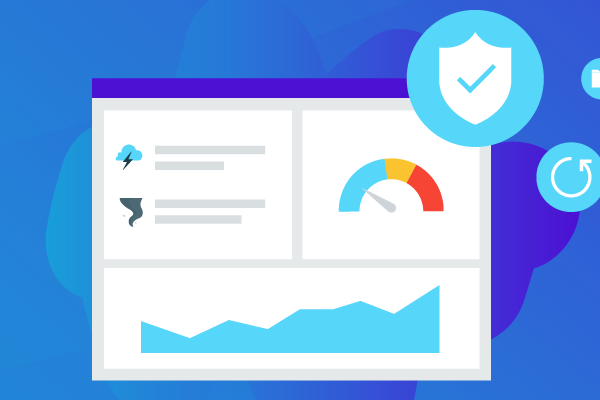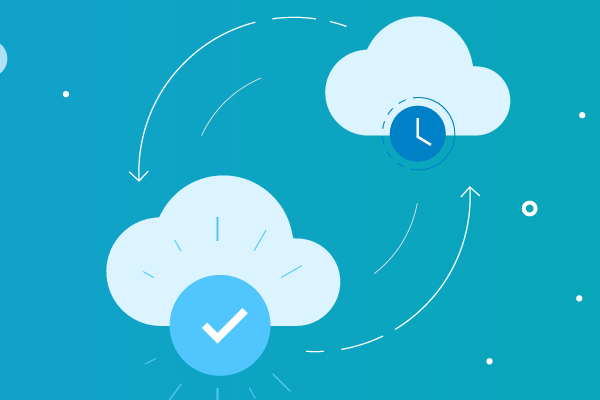What is IT Asset Management (ITAM)?
In the digital era, effective IT asset management (ITAM) is a linchpin for savvy businesses aiming to fully leverage their technological assets. ITAM is an encompassing strategy that manages the lifecycle of an organization’s IT assets, including hardware, software and network systems. This holistic approach ensures that assets are accurately inventoried, efficiently utilized and responsibly disposed of, providing organizations with the means to extract maximum value while mitigating associated risks. This post will unfold the layers of ITAM, its mechanics, its significance to your business and how Datto RMM can enhance your IT asset strategy.
What is IT asset management (ITAM)?
ITAM is a strategic business process that involves identifying, tracking, managing and optimizing an organization’s IT assets. These assets encompass hardware, software and network devices, forming the backbone of an organization’s technological infrastructure.
Why is IT asset management important?
For IT professionals, ITAM is indispensable. It acts as a centralized source of truth for IT assets, promotes better utilization and waste reduction, and facilitates productivity without sacrificing reliability. Here’s why it’s important:
- Single source of truth
In a digital ecosystem flooded with data, ITAM establishes a single source of truth. This centralized repository of accurate and up-to-date information ensures that all stakeholders have access to reliable data, facilitating informed decision-making.
- Improving utilization and eliminating waste
Through constant monitoring and analysis, ITAM identifies underutilized resources and areas of waste. This optimization leads to cost savings and improved efficiency, aligning IT investments with organizational goals.
- Enabling productivity without compromising reliability
Effective ITAM ensures that employees have access to the tools and resources they need for productivity without compromising system reliability. This balance is crucial for sustaining seamless business operations.
- Supporting IT Service Management (ITSM) practices and enabling teams across organizations
ITSM practices rely on accurate information about IT assets. ITAM acts as a foundation for ITSM, supporting service delivery, and enabling collaboration across different teams within an organization.
- Security and enhanced compliance
In an era where cyberthreats are omnipresent, ITAM plays a pivotal role in enhancing security. By maintaining an accurate inventory and ensuring compliance with regulations, organizations can safeguard their assets and sensitive information.
What are the steps in IT asset management process?
To gain a holistic understanding of ITAM, it’s essential to break down the process into key steps:
- Asset planning: This initial stage involves identifying the specific needs of the organization and setting the strategy for acquiring IT assets. Decisions are made concerning what types of assets are needed, how they fit into the existing IT environment, and the budget allocated for these investments. Effective planning is crucial to avoid unnecessary purchases and ensure that every asset acquired delivers value to the organization.
- Procurement: Once the planning is in place, the next step is to purchase the IT assets. This phase includes selecting vendors, placing orders, and procuring items that meet the predefined specifications. During procurement, it’s important to negotiate the best terms and ensure that the assets will be supported and viable over their intended lifespan.
- Receiving and inventory: As assets arrive, they are tagged with unique identifiers and entered into an IT asset management system. This meticulous recording is essential for tracking each asset’s performance, location and lifecycle. It also helps in maintaining an accurate and up-to-date inventory, which is vital for managing assets throughout their operational life.
- Deployment: Deployment involves preparing and configuring the assets for use within the organization. This includes installing necessary software, applying security measures, and physically setting up the equipment. Each asset is then assigned to a user or department, with all relevant details logged for future reference.
- Maintenance and management: Regular maintenance ensures that assets remain functional and efficient. This encompasses hardware repairs, software updates, and routine checks to prevent downtime. Management also includes monitoring software licenses and usage to stay compliant and cost-effective.
- Usage monitoring and performance: Keeping tabs on how, where, and by whom assets are used allows organizations to optimize their performance. This step involves collecting data on asset utilization and using that information to make informed decisions about reallocation, upgrades or retirement of assets.
- Asset optimization: Asset optimization is about making the best use of all IT assets. Underutilized assets may be reallocated or repurposed, while overburdened assets might require upgrades or replacements. Optimization efforts aim to balance the asset load and ensure a cost-efficient operation.
- Risk management and compliance: This involves evaluating the risks associated with IT assets, such as security vulnerabilities or non-compliance with regulations. Implementing control measures to mitigate these risks is crucial for protecting the organization. Compliance with software licenses, data protection laws, and other regulations is also enforced during this phase.
- Asset disposition: When assets reach the end of their useful life, they must be retired and disposed of securely and responsibly. This includes ensuring that all sensitive data is irretrievably destroyed and that disposal methods comply with environmental standards.
- Audit and reporting: Regular audits verify the accuracy of the IT asset inventory and ensure compliance with management policies. Reporting provides valuable insights into the asset lifecycle, supporting strategic decisions and financial planning for future IT asset investments.
Throughout this process, using a tool like Datto RMM can automate several steps, provide real-time monitoring, and ensure that IT assets are effectively managed, secure and compliant.
Challenges and strategies for ITAM implementation
Implementing ITAM can be complex and multifaceted, posing several challenges for organizations. However, with every challenge comes a strategy to overcome it. Here’s a closer look at common challenges and effective strategies:
Challenges:
- Complexity of IT environments: Modern IT environments can be highly complex with a vast array of assets to manage. This can lead to difficulties in tracking and managing the lifecycle of each asset.
- Data accuracy and consistency: Maintaining accurate and up-to-date records of IT assets can be a daunting task, especially if there are data silos or disparate tracking systems within the organization.
- Cost management: Organizations often struggle to balance the costs associated with acquiring, maintaining and disposing of IT assets, while ensuring they derive maximum value from them.
- Regulatory compliance and security: Ensuring all IT assets comply with relevant regulations and security standards can be challenging, particularly as these requirements are constantly evolving.
- Stakeholder buy-in: Gaining the support of stakeholders and ensuring that everyone understands the importance and benefits of ITAM is often a significant hurdle.
Strategies:
- Embracing Automation: Utilize ITAM software that can automate the discovery, tracking, and management of IT assets. Automation can reduce complexity and increase accuracy and efficiency.
- Centralizing Data: Implement a central repository for all IT asset information to enhance visibility and control. This can help ensure that data is consistent and easily accessible.
- Lifecycle Cost Analysis: Conduct comprehensive lifecycle cost analysis for IT assets. Understanding the total cost of ownership can help in making more informed procurement and maintenance decisions.
- Regular Compliance Audits: Perform regular audits to ensure compliance with relevant regulations. Implement security best practices to protect against vulnerabilities and data breaches.
- Effective Communication: Communicate the benefits and value of ITAM clearly to all stakeholders. Tailor the communication to show how ITAM aligns with their specific goals and objectives.
- Training and Education: Offer training programs to educate employees about ITAM processes and their role in maintaining asset integrity and security.
- Continuous Improvement: Regularly review and improve ITAM processes. Stay abreast of best practices and technological advancements that can enhance ITAM efficiency.
- Partnership with IT Vendors: Build strong relationships with IT vendors to ensure favorable terms and support for assets throughout their lifecycle.
By addressing these challenges with a clear and proactive strategy, organizations can build a strong ITAM foundation that supports operational efficiency, cost savings and strategic asset management.
Datto RMM: Your ITAM solution
Datto RMM emerges as a comprehensive IT service management tool, covering a vast range of features including IT Asset Management. It’s crafted to assist IT professionals by not just tracking and managing assets but by fortifying the broader IT ecosystem. With Datto RMM, your ITAM becomes streamlined, efficient and integrated.

Apart from its real-time monitoring, automated maintenance and actionable reporting features, Datto RMM also allows organizations to:
- Streamline IT asset discovery: Automated discovery tools quickly identify and document all IT assets within the network.
- Centralize asset information: Datto RMM provides a centralized repository for all asset-related information, ensuring a single source of truth.
- Monitor and optimize usage: Continuous monitoring allows organizations to optimize asset usage, eliminating waste and improving overall efficiency.
- Enhance security measures: Datto RMM’s advanced security features contribute to the overall cybersecurity posture, protecting assets from potential threats, including ransomware.
Learn more about Datto RMM
Discover the full capabilities of Datto RMM in managing IT assets by visiting the Datto RMM product page. There, you’ll find how Datto RMM’s features can revolutionize your ITAM endeavors.
Robust IT Asset Management is pivotal for IT success. It promises cost savings, operational efficiency and enhanced security. With Datto RMM, you gain a powerful ally in your ITAM journey. To learn more about how Datto RMM can transform your IT Asset Management process, visit Ceeva Puts Security First with Datto RMM and explore the possibilities of Datto RMM. Empower your organization with the tools it needs for a seamless, secure and efficient IT infrastructure.




